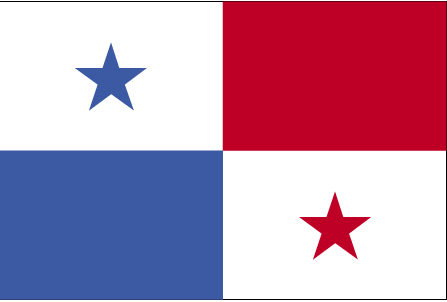Login form
Customs of Panama
Marriage and Family
 In the interior, common-law marriages are usual, while in urban areas church weddings are common. To marry in a church, a couple must get a license and receive religious instruction before a church official can perform the ceremony.
In the interior, common-law marriages are usual, while in urban areas church weddings are common. To marry in a church, a couple must get a license and receive religious instruction before a church official can perform the ceremony.
The father is traditionally the head of the family, and the mother generally takes responsibility for the home. Less than one-third of the labor force is female. The extended family has become less important than it used to be, but adult children expect to care for their aging parents, even if they do not live with them. A large number of births take place out of wedlock, especially in the interior, but many of these are within stable common-law marriages. Families in urban areas often live in rented apartments, while those in rural areas may own a small home.
Eating
Rice is served with almost every meal in
In rural areas, people often have a big breakfast early, a main meal at midday, and a smaller meal at around 5 pm. Urban families try to eat together, but families in the campo (country) are often prevented from doing so by their work schedules. It is good manners to keep hands above the table during a meal. In the rural interior, the spoon is the utensil used most often. Guests are served first, followed by men, children, and women and the person who has done the cooking. Urbanites eat out often, but campesinos (farmers) rarely do.
Socializing
Many Panamanian women (and sometimes men and women) greet each other with an abrazo-that is, they clasp hands as in a handshake, lean forward, and give each other a kiss on the cheek. When greeting or parting, men in urban areas shake hands with one another, often patting the other on the shoulder at the same time. Campesinos in the rural parts of the country usually shake hands only when greeting. The most common verbal greetings include ¿Cómo está? (“How are you?”), ¡Buenos días! (“Good day!”), ¿Qué tal? (“What’s up?”), ¿ Qué hay de bueno? (“What’s good?”), ¿Cómo le ha ido? (“How’s it been?”), ¿Cómo le va? (“How’s it going?”), and ¡Hola! (“Hi!”). It is polite to inquire about the welfare of family members after an initial greeting. Common terms for saying good-bye include ¡Hasta luego! (“See you later”), ¡Que le vaya bien! (“May things go well for you!”), and in the cities, ¡Chao! (“Good-bye”). Adiós is rarely used because it is considered fairly permanent.
In formal situations among the educated it is usual to address people by their titles, such as Maestro (a male teacher), Profesora (a female professor), Ingeniero (a male with a bachelor of science degree), or Doctora (a female doctor). Other titles include Señor (“Mr.”), Señora (“Mrs.”), and Señorita (“Miss”). Don and Doña are used for respected or elderly men and women. Deference to elders in any situation is important. Many Panamanians are known by a nickname that is widely used among friends and in informal greetings. People often address each other by terms of relationship such as hermano (“brother”), amigo (“friend”), and tía (“aunt”).
Relatives and friends visit one another often. In urban areas, Sunday is a popular day for visiting. In the rural interior, relatives may see each other every day. A visit is considered a compliment, and even unexpected visitors are made welcome. Panamanians are informal hosts who make a point of taking special care of their guests. They may offer them the best seats and the choicest cuts of meat, and send them home with a small gift. It is not usual for guests invited for a meal to bring a gift, but they are expected to return the hospitality at a later date.
In the interior, but not in cities, it is common for people to exchange gifts such as food or seedlings; it is part of the custom of sharing one’s good fortune with friends.
Recreation
In urban areas, many people participate in team sports. Baseball is the most popular sport; other favorites include soccer, boxing, and basketball. Panamanians enjoy betting, and horse races, cockfights, and the national lottery are very popular. Socializing on the porch and visiting friends are important leisure activities. People also enjoy watching television and going to the movies. Poetry readings are popular. Traditional Panamanian music, called Típico, is played by a band consisting of a singer and players with an accordion, a guitar, some percussion instruments, and sometimes a violin. Típico is more common in rural areas and is joined in cities by samba, jazz, and reggae music. On the
Holidays and Celebrations
Official holidays are New Year’s Day (1 January), Martyrs’ Day (9 January), Labor Day (1 May), the Founding of Panama City (15 August), Columbus Day (12 October), Independence Day (3 November), Flag Day (4 November), First Shout of Independence in the
Source: Encarta Interactive World Atlas

